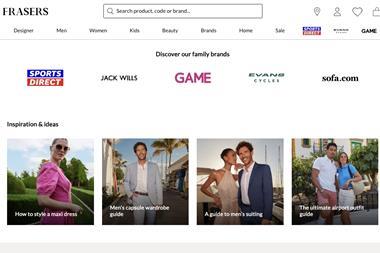Physical retail may be back with a bang, but online still remains a popular channel for customers shopping over Black Friday and Christmas.
Online will remain an important part in the build-up to Black Friday and Christmas, as data from Adobe shows that a total of £11.2bn was spent online in December 2023 in the UK.
Customers’ needs are also evolving, with many seeking better online experiences. With this in mind, Retail Week looks at the key trends influencing ecommerce as we head into the golden quarter, highlighted at this year’s Ecommerce Expo.
Next-level loyalty
Being rewarded for loyalty is important for consumers, but this now extends beyond traditional discounts and freebies.
Chief operating officer at software company Voyado Michael Jerlin said loyalty programmes “drive retention, increase sales and customer satisfaction”, but that each customer wants a different reward for their repeat purchases.
Speaking at the expo, he added that providing alternative perks such as cashback, exclusive access to events or personalised offers is much more attractive to the current customer.
Voyado’s research shows repeat customers spend 67% more than new customers, so it is worth retailers thinking about differentiating their loyalty offering ahead of the golden quarter to retain even more spend.

AI to drive sales
AI is used across all aspects of retail, whether through the supply chain, on the shopfloor or for customer service, and is a useful tool in helping generate revenue.
Predictive analysis using AI can be leveraged to target individual shoppers based on what time of day they are likely to shop, and if email or SMS is the best form of contact to send them deals on relevant products.
Online retailers could also benefit from AI search to boost sales. It uses previous user history to automatically generate more accurate and appropriate results.
With 94% of consumers having abandoned shopping due to irrelevant search results according to market research company Harris Poll, this tool would particularly come in handy for retailers heading into the all-important golden quarter.

Increasing personalisation
While the theme of personalisation isn’t new, there are new ways to strengthen the offer to the customer.
Haircare brand Philip Kingsley spoke about its online quizzes for new users, asking questions based on hair type, texture, length and colour. This results in the individual being offered personalised recommendations for products and services suited to them.
Another way to boost personalisation is to take a localised approach. One executive at Oner Active said the retailer understands that there are differences in various markets, so they take a local approach using data to suggest products depending on the weather in an individual’s location.

Retail marketplaces
Retailers and marketplaces often operate as separate entities, but the lines between the two are blurring as the likes of Tesco and B&Q operate online marketplaces hosting third-party sellers.
Although brands can put their items up for sale, retailers earn commission on products sold on the website to give them that extra bit of revenue.
Online marketplace provider Mirakl’s regional vice president Simon Dyer said it’s better to get “a percentage of something rather than 100% of nothing”, adding that a retailer can end up with a bigger basket as shoppers tend to buy both first- and third-party products.
The success of marketplaces was a hot topic at the expo as more retailers are exploring this option. Just this month, B&Q reported its total ecommerce sales grew 18.3% year on year, which was “driven by B&Q’s marketplace”.

Eyes on Gen Alpha
While retailers can’t quite target the under-16s, they can through the spending power of parents.
Many pre-teens are also exposed to social media and influencers showcasing the coolest trends in fashion, beauty and electronics, informing their parents on what to buy for them.
New technology is also being adopted by Gen Alpha, including augmented reality (AR) where shoppers can virtually try on items like clothes, makeup and shoes.
Ruth Arber, head of fashion, retail and travel at Snap, said more retailers are using AR, with Snap previously teaming up with Asos for a virtual runway and Mac for shoppers to virtually try on lipsticks.
She added that the challenge for brands is to continually create new products and experiences for Gen Alpha, as they can lose interest quickly.
With the total number of people in the Gen Alpha bracket set to reach 2 billion next year, offering elevated in-store and online experiences is crucial if retailers want to win their hearts and pockets.

























No comments yet